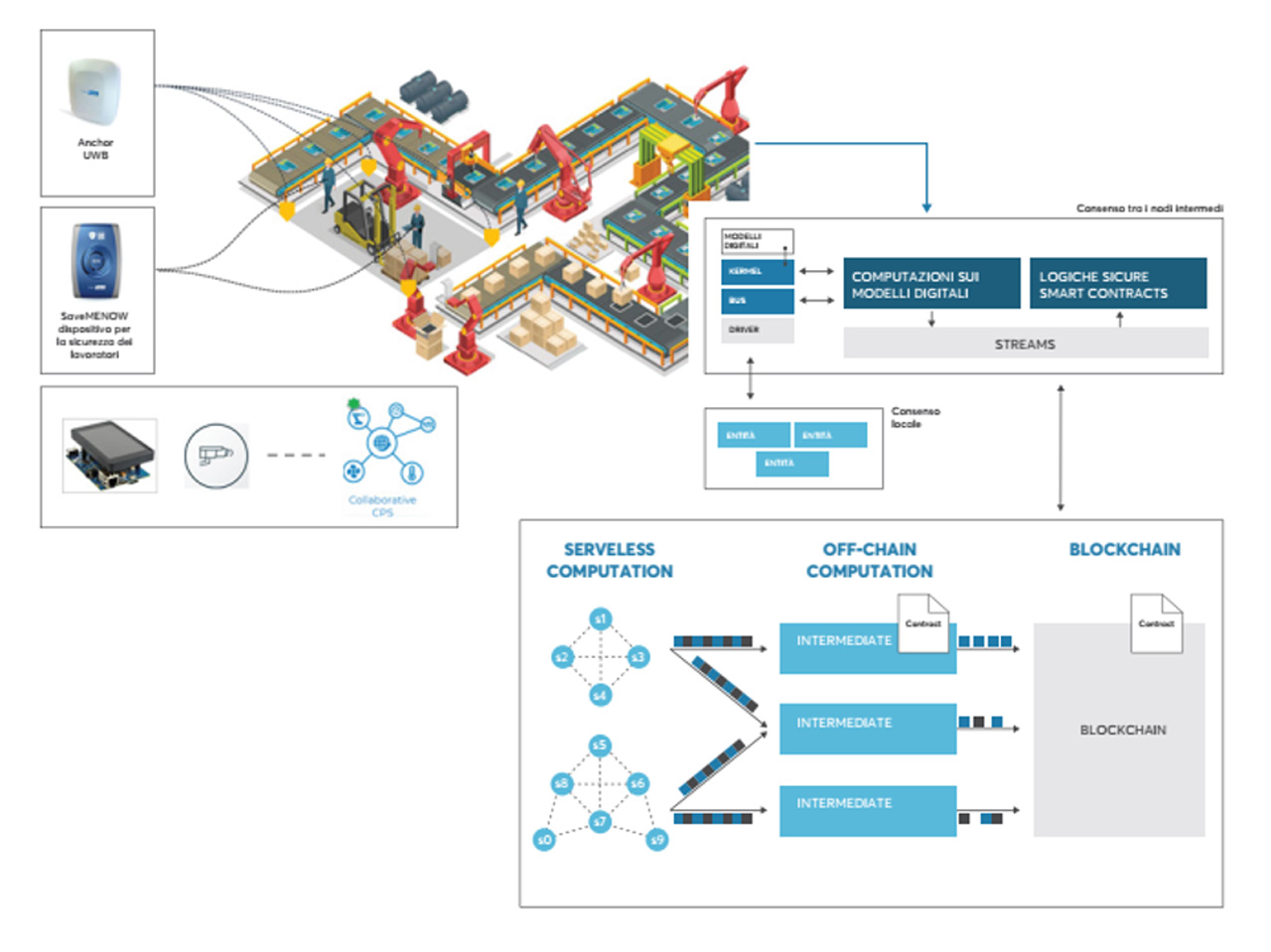
Use case DAPPS
(SMART CONTRACTS) ON EDGE COMPUTING AND COLLABORATIVE SENSOR TECHNOLOGY
The use case envisages smart-track within a 4.0 production line characterized by the presence of (collaborative) robots, movement means, operational systems and human operators.
The use case addresses the monitoring of the position and movement of the operators according to a paradigm that provides by default a trust on the data from the field, which ensures the reliability of the information and improves the confidence on the correctness of the actions to be taken towards the production line. This ensures the reliability of the information and improves confidence about the correctness of actions to be taken toward the production line.
The topics that have the primary relationship to this use case are: Edge Computing, Collaborative Sensing and DLT, and Hybrid Blockchain. In particular, the theoretical themes and research resulting from the other ORs of the project have been incorporated into the use case and brought together to build an innovative data trust and secure computation solution based on collaborative sensoristics.
Integrations with respect to the objectives of the use case: have been analyzed the issues underlying the real use case Filippetti in the context of a solution of smart tracking of operators within a production line through which it must be possible to define their position in real time, ensure continuous monitoring of their safety through IoT wearable devices, make reliable and secure the interaction with production systems such as, for example, collaborative robots. In this scenario, the technologies and methodologies resulting from the previous phases of the project have been identified, namely: Edge Computing and secure and collaborative sensors for real-time data collection and analysis, DLT and hybrid Blockchain for notarization of data through smart contracts. Use case development: the Filippetti wearable IoT badge-based collaborative sensing and Edge Computing layer was extended with the consensus algorithms developed in the project. The algorithms allow to establish the consistency of distance measurements detected between badges in proximity areas, highlighting devices that declare discordant or anomalous measurements compared to the majority of other badges. In addition to improving the security level of the safety & security logics, the information is received by the hybrid Blockchain where the results of the intermediate elaborations are sent towards the Blockchain region in the Cloud.
Valorisation of the results: the results confirm the final objectives and have made it possible to add to the safety & security solutions elements of security and trust of the monitoring data by-design, reusing the same IoT technology but with its own security elements. This guarantees on one hand the sustainability of the solution without a change of hardware or software platforms, on the other hand it allows to create new value also in existing solutions.
